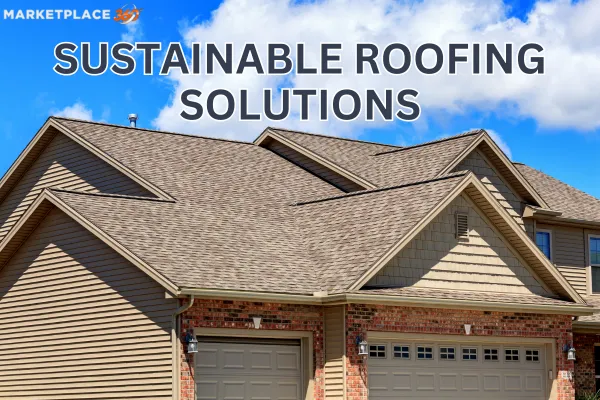
Sustainable Roofing Solutions 2024
Sustainable Roofing Solutions: Everything You Need to Know
In today’s world, sustainability is more than a buzzword; it’s a guiding principle shaping industries, including roofing. As climate concerns grow, homeowners and businesses are turning to sustainable roofing to reduce environmental impact while benefiting from energy efficiency and cost savings. Here's an in-depth look at sustainable roofing solutions, their types, benefits, and how they’re shaping the future of construction.
What Is Sustainable Roofing?
Sustainable roofing involves using eco-friendly materials, energy-efficient designs, and innovative technologies to create roofs that last longer and have minimal environmental impact. These solutions aim to conserve energy, reduce waste, and often contribute to the building's overall efficiency.
Types of Sustainable Roofing Systems
1. Green Roofs
Green roofs feature a layer of vegetation planted over a waterproof membrane. They offer excellent insulation, help manage stormwater, and enhance air quality. Green roofs also contribute to biodiversity by providing habitats for various species.
2. Cool Roofs
These roofs are designed to reflect more sunlight and absorb less heat than standard roofs. They are typically made from reflective materials like white or light-colored coatings, which help keep buildings cooler and reduce air conditioning costs.
3. Solar Roofs
Solar roofs incorporate photovoltaic cells, turning the roof into a power source. Modern solar panels are more efficient and aesthetically pleasing, with options like solar shingles that blend seamlessly with traditional roofing materials.
4. Recycled and Recyclable Roofing Materials
Using materials like recycled metal, rubber, or reclaimed wood minimizes waste. Some roofs are designed to be fully recyclable at the end of their life cycle, reducing landfill impact.
5. Advanced Synthetic Materials
Thermoplastic polyolefin (TPO) and polyvinyl chloride (PVC) are popular for their durability, flexibility, and energy efficiency. These materials are ideal for commercial roofing, especially in regions with extreme weather conditions.
Benefits of Sustainable Roofing
Environmental Benefits
Lower Carbon Footprint: By using eco-friendly materials and reducing energy consumption, sustainable roofs help combat climate change.
Water Management: Green roofs absorb rainwater, decreasing runoff and the risk of urban flooding.
Economic Advantages
Energy Savings: Cool and solar roofs reduce heating and cooling costs significantly.
Long-Term Savings: Durable materials mean fewer replacements and repairs, lowering overall expenses.
Improved Building Performance
Enhanced Comfort: Better insulation maintains comfortable indoor temperatures.
Noise Reduction: Some sustainable roofing options, like green roofs, offer excellent sound insulation.
Challenges and Considerations
While sustainable roofing offers numerous benefits, it comes with considerations:
Higher Initial Costs: Eco-friendly materials and advanced technologies can be more expensive upfront.
Maintenance: Some systems, like green roofs, require ongoing care to ensure they function effectively.
Structural Requirements: Heavier roofs, such as green or solar, may require additional structural support.
Future of Sustainable Roofing
The future of roofing is green, with advancements in technology making sustainable solutions more accessible and efficient. Innovations like smart roofing, which uses sensors for real-time monitoring, and adaptive materials that respond to environmental changes, are set to revolutionize the industry.
Conclusion
Sustainable roofing is not only an investment in your property but also in the planet’s future. Whether it’s reducing your energy bills, enhancing your home’s value, or contributing to a healthier environment, sustainable roofing solutions offer a win-win for everyone. Embrace the change and be part of the movement towards a greener future!





